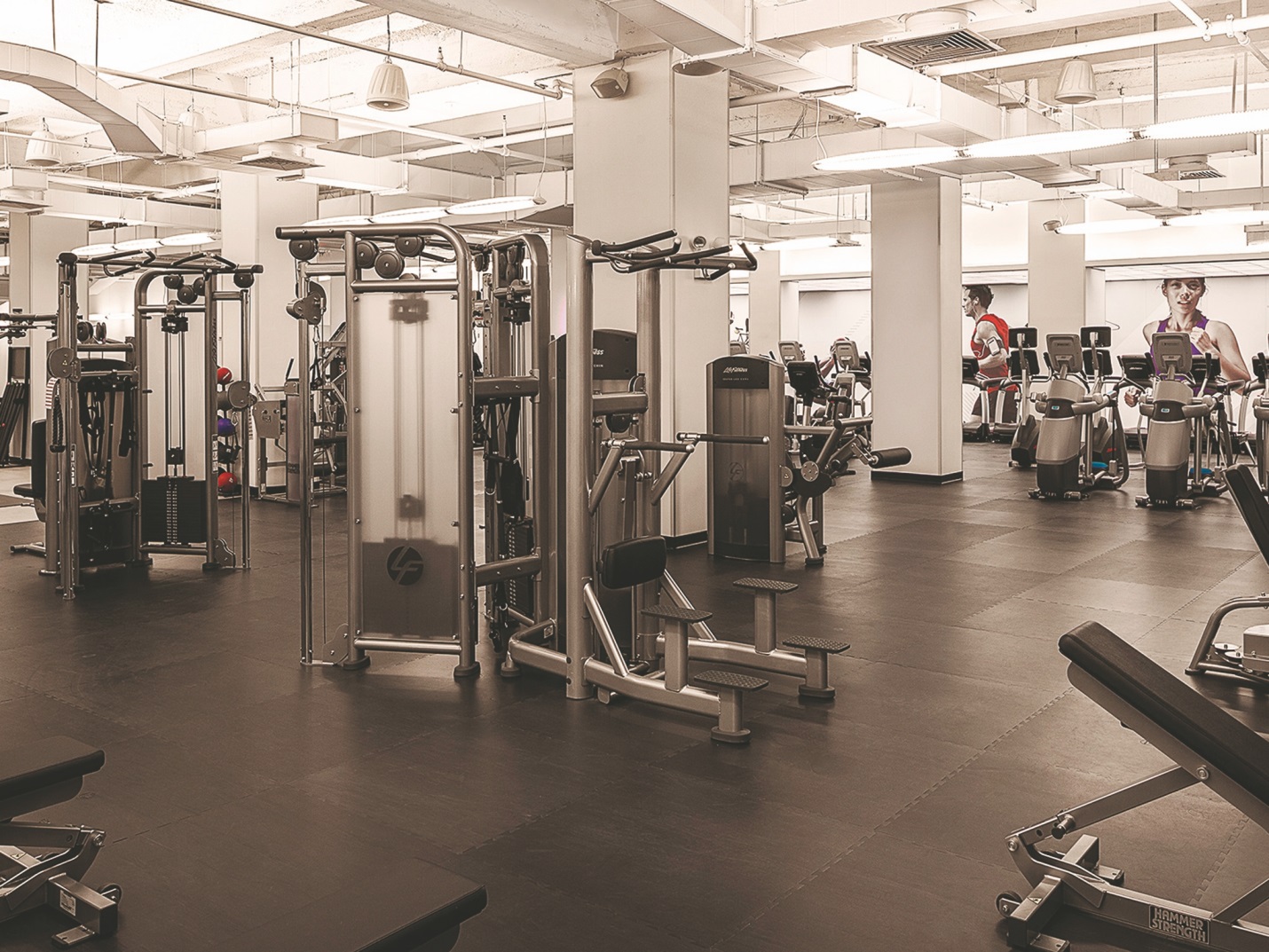The bells and whistles—puppy playrooms, pools and patios—that landlords use with increasing vigor these days to sell residential condos, are making the leap into the office sector. The owners of properties including two of the city’s best-known landmarks—the Empire State Building, and 75 Rockefeller Plaza—are spending big bucks to create everything from gymnasiums to roof terraces. They are doing it to burnish their properties’ appeal (and rents) in the eyes of a new generation of tenants. Once an isolated phenomenon, the amenities arms race has taken off in recent months.
“Several major owners are looking at including amenity programs across their entire portfolios,” said Mikael Nahmias, a broker with Cushman & Wakefield. He cites the example of RXR Realty, whose $130 million-plus renovation of 75 Rockefeller Plaza will include the conversion of several underused terraces into appealing outdoor lounges for both executives and tenants.
Ironically, that move comes nearly 100 years after several buildings within Rockefeller Center became the first in the city to boast what are now called green roofs, though they were not for tenant use but for ornamentation.
It wasn’t until the height of the last real estate cycle, in 2007, that landlords started picking up on the idea, though. For example, Harry Macklowe built a swimming pool and health club, available for executives, into the concourse and ground levels at 510 Madison Ave. The building was later acquired by Boston Properties.
Time Equities seized on Rockefeller Center’s example and built a 6,000-square-foot roof deck atop its 400,000-square-foot office tower at 125 Maiden Lane downtown, along with an exercise room.
“It was really powerful, and I think that it helped sell the property,” said Michael Rudder, principal of Rudder Property Group, who worked on the building’s marketing team.
For Time Equities, tenant amenities were something it knew well as an owner of various residential properties in the city. In the residential market, bells and whistles are frequently part of an effort by landlords to make life easier for tenants in far-flung properties, such as Related Cos.’ MiMA Tower or Two Trees Management’s Mercedes House, both on the far West Side.
But fast-forward seven years, and there is a new driver pushing commercial landlords to up the amenity ante—a changing workplace with a lot more millennials and a different set of expectations.
“The 9-to-5 workday is extinct,” said Stephen Eynon of CBRE, noting that firms are looking to create a more comfortable working environment to retain and attract top talent.
To do that, office landlords are offering everything from bike storage to gyms, showers, cafés and roof decks. Such offerings first popped up in revampings of industrial space undertaken by tech firms. Many of them added kitchens, lounges and playrooms within their space in midtown south to make the workplace more inviting and collaborative. Only in recent months have landlords aggressively taken up the mantle.
“Amenities are attractive to tenants. If landlords are willing to provide them, it gives their building an advantage,” Mr. Nahmias said.
Within the past month, for example, SL Green added a bocce court to the rooftop of its tower at 635-641 Sixth Ave. in midtown south. Now, in a sign of just how deeply that aesthetic has penetrated the mainstream office market, the firm is bringing the live/work concept to the old Daily News Building in the heart of midtown at 220 E. 42nd St. In full-page newspaper ads, SL Green trumpets its asset as offering “midtown convenience, midtown south cool.”
Rent booster

A few blocks away, RFR Realty is close to completing a $65 million renovation at 550,000-square-foot 285 Madison that, among other things, will create space for a gym, lounge and restaurant. According to CBRE’s Mr. Eynon, who is marketing space there, these offerings will boost asking rents by up to 15% over the nearly $65 per-square-foot average in the Grand Central submarket. RFR is also carving out some space for an executive lounge at the landmarked Seagram Building, where rents stretch as high as $170 per square foot.
But while amenity packages can help make a building more attractive, they don’t always justify taking up the choicest space.
The Empire State Realty Trust did stick a conference center on the 67th floor of its namesake building, which is in the latter stages of a $550 million renovation. But for its 15,000-square-foot fitness center and restaurants, it chose the concourse and ground-floor levels.
Views are key
“We thought it was important to have a conference facility with spectacular views, and the displacement of rent there was affordable,” said Thomas Durels, executive vice president and director of leasing at the trust. “But the concourse level, while rentable, is typically associated with a ground-floor retailer, storage or back-office space.”
The bottom line is that no matter where building owners choose to sandwich in their amenities, tenants will cheer them.
It makes the building especially attractive for smaller tenants who might not have the budget or space to add even the simplest amenities themselves. Caspi Development is hoping to attract smaller tenants at 161 Bowery, which it’s currently renovating. A rooftop lounge will include a refrigerator designed to hold a beer keg. But in a sign that the trend knows some limits, tenants will have to fill it themselves.

